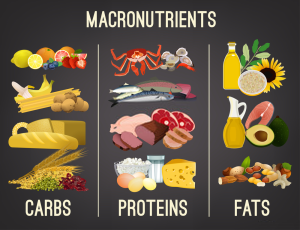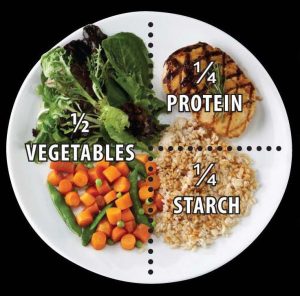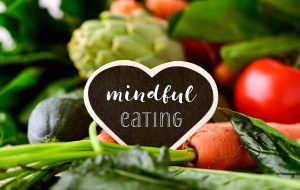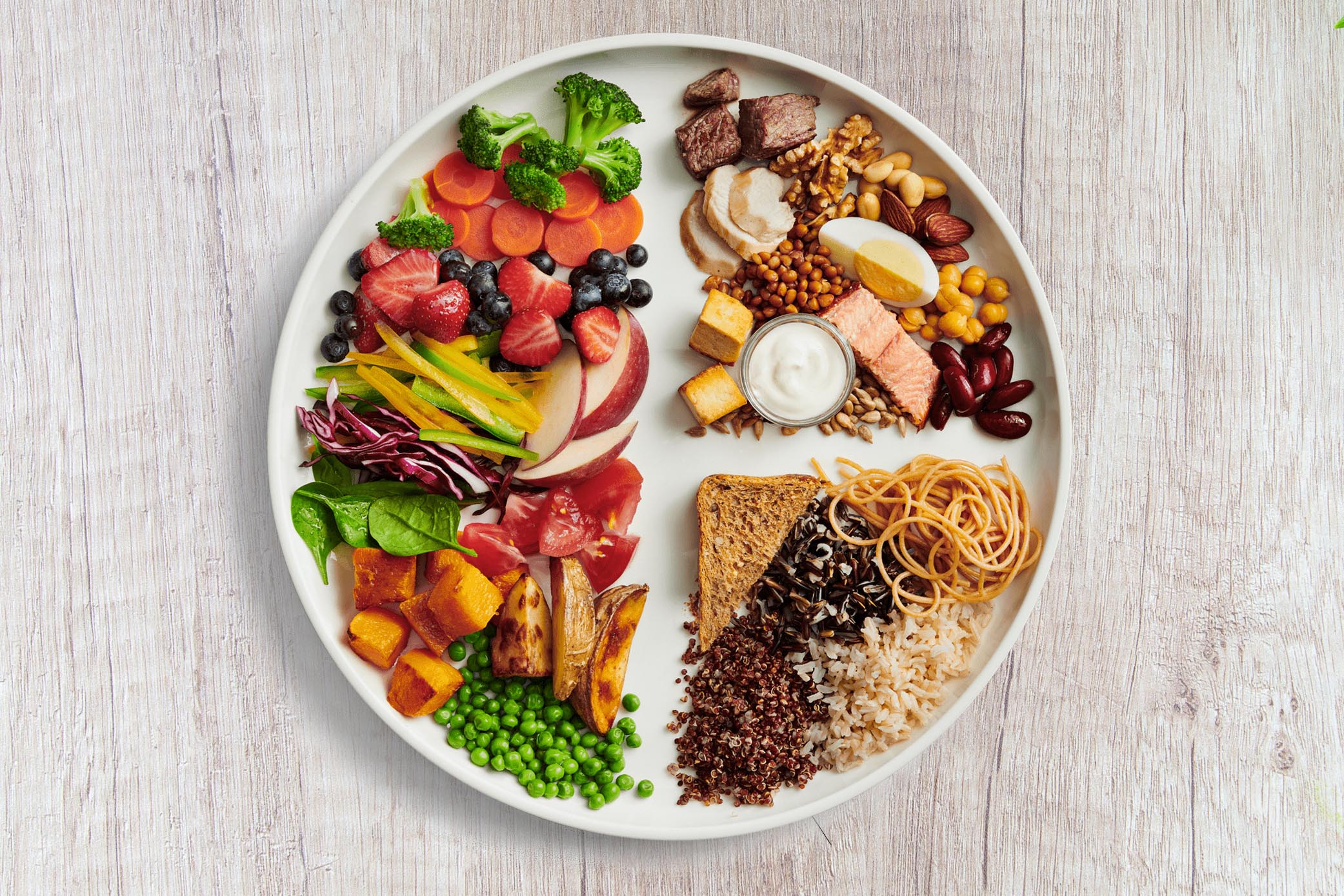Nutrition Tips for Building a Healthy Plate
In today’s fast-paced world, maintaining a balanced and nutritious diet can be challenging. With so many fad diets and conflicting information available, it’s easy to feel overwhelmed and unsure about what constitutes Building a Healthy Plate. However, by focusing on a few key nutrition tips, you can build a foundation for balanced eating success that will support your overall health and well-being. Explore More About Health Issues and Their Solutions (How To Improve You Health in 30 Days)

Understanding Macronutrients
What are Macronutrients?
Macronutrients are the essential nutrients that our bodies need in large quantities to function properly. These include carbohydrates, proteins, and fats.
Balancing Macronutrients
A balanced plate should include a combination of all three macronutrients. Aim to fill half your plate with vegetables 🥦 and fruits 🍎, one-quarter with lean proteins 🍗, and one-quarter with whole grains 🌾 or healthy fats 🥑.

Prioritizing Whole Foods
The Importance of Whole Foods
Whole foods are foods that are minimally processed and as close to their natural state as possible. These foods are rich in essential nutrients and free from added sugars, preservatives, and artificial additives.
Incorporating Whole Foods
When Building a Healthy Plate, prioritize whole foods such as fruits, vegetables, whole grains, lean proteins, and healthy fats. These foods provide the nutrients your body needs to thrive and can help you maintain a healthy weight.
Portion Control
Why Portion Control Matters
Portion control is crucial for maintaining a healthy weight and preventing overeating. Eating oversized portions can lead to weight gain and other health issues over time.
Tips for Portion Control
- Use smaller plates 🍽️ and bowls to control portion sizes.
- Measure out serving sizes of foods like rice, pasta, and meats to avoid overeating.
- Pay attention to hunger and fullness cues, and stop eating when you feel satisfied.

What is Mindful Eating?
Mindful eating is the practice of paying attention to the present moment while eating. It involves being aware of your thoughts, feelings, and sensations around food without judgment.
Mindful Eating Habits To Building a Healthy Plate🍽️
Slowing Down and Savoring Each Bite 🍴
Mindful eating habits involve paying full attention to the experience of eating and drinking, both inside and outside the body. It means observing how food makes you feel and acknowledging physical hunger and satiety cues without judgment. By practicing mindful eating, you can develop a healthier relationship with food and gain a greater appreciation for the nourishment it provides.
Listening to Your Body’s Hunger and Fullness Signals 🧘♂️
One key aspect of mindful eating habits is slowing down and savoring each bite. Instead of rushing through meals, take the time to chew slowly and fully experience the taste, texture, and aroma of your food. This allows you to fully enjoy the eating experience and can help prevent overeating.
Being Mindful of Your Surroundings and Context 🌿
Another important component of mindful eating habits is being aware of your body’s hunger and fullness signals. Before eating, take a moment to assess your level of hunger. Are you truly hungry, or are you eating out of boredom, stress, or habit? Throughout the meal, check in with your body periodically to see how hungry or full you feel. Stop eating when you’re satisfied, even if there’s food left on your plate.
Recognizing Emotions and Thoughts 🧠
Mindful eating habits also involve being mindful of your surroundings and the context in which you’re eating. Try to eat in a calm, distraction-free environment whenever possible. Turn off the TV, put away your phone, and focus solely on the act of eating. This allows you to fully engage with your food and enhances the eating experience and Building a Healthy Plate.
Embracing the Present Moment 🌟
Additionally, mindful eating habits include being mindful of the emotions and thoughts that arise during eating. Notice any emotions or thoughts that come up while you’re eating, such as guilt, stress, or judgment. Instead of pushing these feelings away, acknowledge them without judgment and gently redirect your focus back to the present moment and the act of eating.
Benefits of Mindful Eating 🌱
By incorporating mindful eating habits into your daily routine, you can develop a healthier relationship with food, improve digestion, and prevent overeating. Remember to slow down, pay attention to your body’s hunger and fullness cues, eat in a calm environment, and be mindful of your emotions and thoughts while eating. With practice, mindful eating can become a natural and enjoyable part of your life.

Hydration
The Importance of Hydration
Staying hydrated is essential for overall health and well-being. Water plays a crucial role in nearly every bodily function, including digestion, nutrient absorption, and temperature regulation.
Tips for Staying Hydrated
- Drink plenty of water throughout the day 💧, aiming for at least eight glasses.
- Limit sugary beverages like soda and fruit juice, which can add empty calories and contribute to weight gain.
- Incorporate hydrating foods into your diet, such as cucumbers, watermelon, and broth-based soups.
Planning and Preparation
The Benefits of Planning Ahead
Planning and preparing meals in advance and Building a Healthy Plate can help you make healthier choices and avoid the temptation of convenience foods. By having nutritious options readily available, you can stay on track with your goals and avoid impulsive eating decisions.
Tips for Meal Planning
- Set aside time each week to plan your meals and snacks.
- Create a shopping list based on your planned meals and stick to it to avoid impulse purchases.
- Prep ingredients ahead of time, such as chopping vegetables or cooking grains, to streamline meal preparation during the week.
Additional Tips for Building a Healthy Plate
Oily Fish
Incorporate oily fish 🐟 into your diet regularly. Oily fish such as salmon, mackerel, and sardines are rich in omega-3 fatty acids, which are essential for heart health and brain function.
Eat from Smaller Plates
Using smaller plates and bowls can help you control portion sizes and prevent overeating. Research suggests that people tend to eat less when they use smaller dishes, making it easier to maintain a healthy weight.
Eat Less Red and Processed Meat
Limit your intake of red and processed meats, such as beef, pork, and deli meats. These foods are often high in saturated fats and sodium, which can increase the risk of heart disease and other health problems.
Eat More Plants
Focus on incorporating more plant-based foods into your diet and create Building a Healthy Plate, such as fruits, vegetables, legumes, and whole grains. Plant-based diets are rich in fiber, vitamins, and minerals, and have been linked to a lower risk of chronic diseases like heart disease, diabetes, and certain cancers.
Eat the Rainbow
Variety is key when it comes to a healthy diet to Building a Healthy Plate. Aim to eat a variety of colorful fruits and vegetables each day to ensure you’re getting a wide range of nutrients. Different colors indicate different nutrients, so eating a rainbow of produce can help ensure you’re meeting all your nutritional needs.
Fats
Not all fats are created equal. Focus on incorporating healthy fats into your diet, such as those found in avocados, nuts, seeds, and olive oil. These fats are beneficial for heart health and can help keep you feeling full and satisfied.
| Aspect | Healthy Eating Habits | Unhealthy Eating Habits |
|---|---|---|
| Macronutrients | Balanced intake of carbohydrates, proteins, and fats | Excessive consumption of refined sugars and fats |
| Portion Sizes | Controlled portions based on nutritional needs | Oversized portions leading to overeating |
| Food Choices | Whole, minimally processed foods | Highly processed foods with added sugars and fats |
| Hydration | Adequate water intake throughout the day | High consumption of sugary beverages |
| Meal Preparation | Planning and preparing nutritious meals in advance | Reliance on fast food and convenience meals |
| Mindful Eating | Mindful consumption, focusing on hunger cues | Mindless eating, often due to emotional triggers |
| Variety and Balance | Balanced intake of fruits, vegetables, and proteins | Limited variety, with a focus on unhealthy snacks |
Final Thoughts About Building a Healthy Plate
By incorporating these key nutrition tips into your daily routine, you can build a healthy plate that supports your overall health and well-being. Remember to focus on whole foods, prioritize portion control and mindful eating, stay hydrated, and plan and prepare meals in advance. With these strategies in place, you can achieve balanced eating success and enjoy a happier, healthier life.
FAQS
Why is it important to balance macronutrients on my plate?
Balancing macronutrients ensures that you’re getting a variety of essential nutrients that your body needs to function properly. Each macronutrient plays a unique role in supporting overall health and well-being.
What are some examples of whole foods?
Whole foods include fruits, vegetables, whole grains, lean proteins, and healthy fats. These foods are minimally processed and packed with nutrients, making them ideal choices for a balanced diet.
How can I practice portion control effectively?
Using smaller plates and bowls, measuring serving sizes, and paying attention to hunger and fullness cues are all effective strategies for practicing portion control and preventing overeating.
What are the benefits of mindful eating?
Mindful eating can help you develop a healthier relationship with food, improve digestion, and prevent overeating by encouraging you to slow down and savor each bite.
Why is hydration important for overall health?
Staying hydrated is essential for nearly every bodily function, including digestion, nutrient absorption, and temperature regulation. Drinking plenty of water throughout the day can help you feel more energized and focused.
What are some examples of oily fish?
Oily fish such as salmon, mackerel, and sardines are rich in omega-3 fatty acids, which are beneficial for heart health and brain function. Including these fish in your diet regularly can help support overall health.
How can eating from smaller plates help with portion control?
Research suggests that using smaller plates and bowls can trick your brain into thinking you’re eating more food, leading to smaller portion sizes and reduced calorie intake.
Why should I limit my intake of red and processed meats?
Red and processed meats are often high in saturated fats and sodium, which can increase the risk of heart disease, diabetes, and other health problems. Choosing lean protein sources like poultry, fish, and legumes can be healthier options.
What does it mean to “eat the rainbow”?
Eating the rainbow refers to consuming a variety of colorful fruits and vegetables, each of which provides different nutrients and health benefits. Aim to include a diverse range of colors in your diet to ensure you’re getting a wide range of nutrients.
How can I incorporate more plant-based foods into my diet?
Focus on filling your plate with plant-based foods like fruits, vegetables, legumes, and whole grains. These foods are rich in fiber, vitamins, and minerals, and can help support overall health and well-being.




